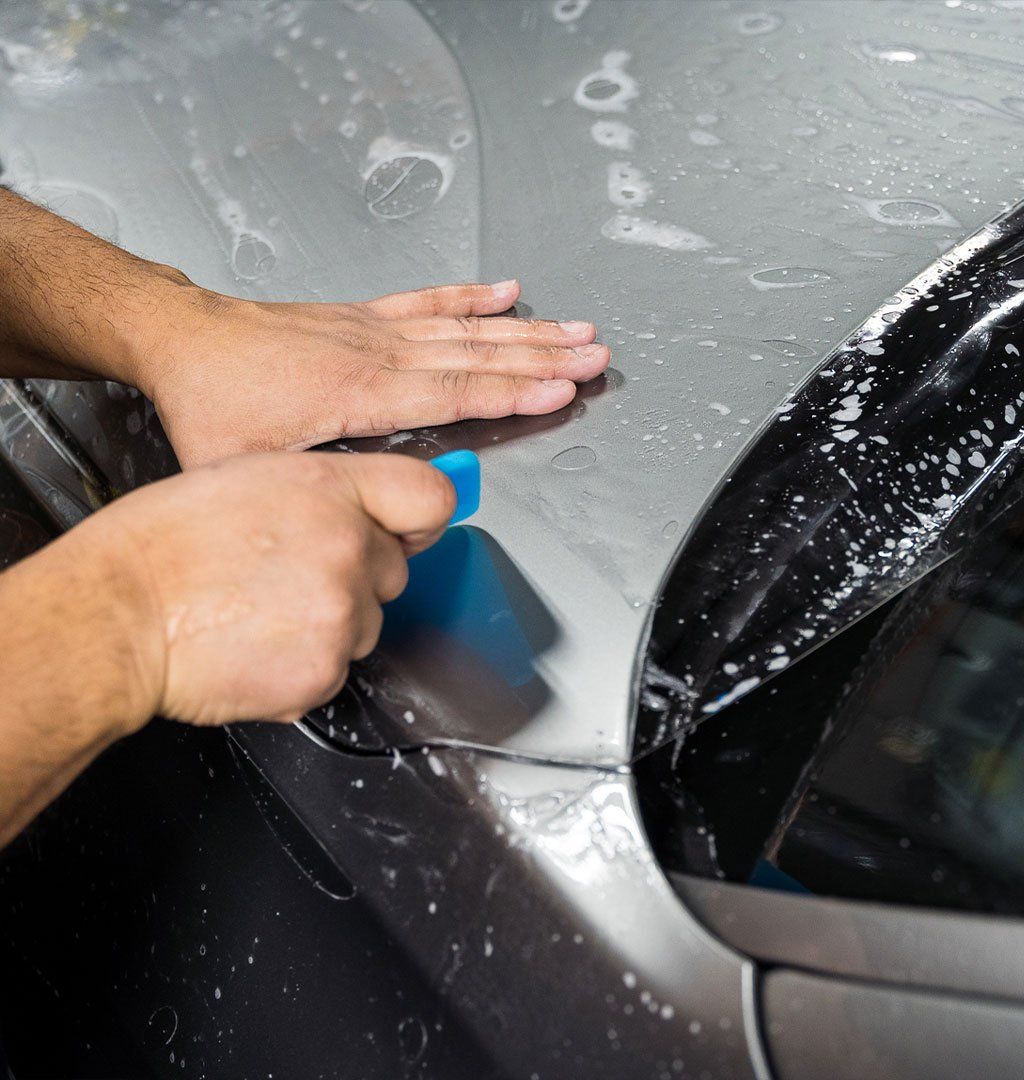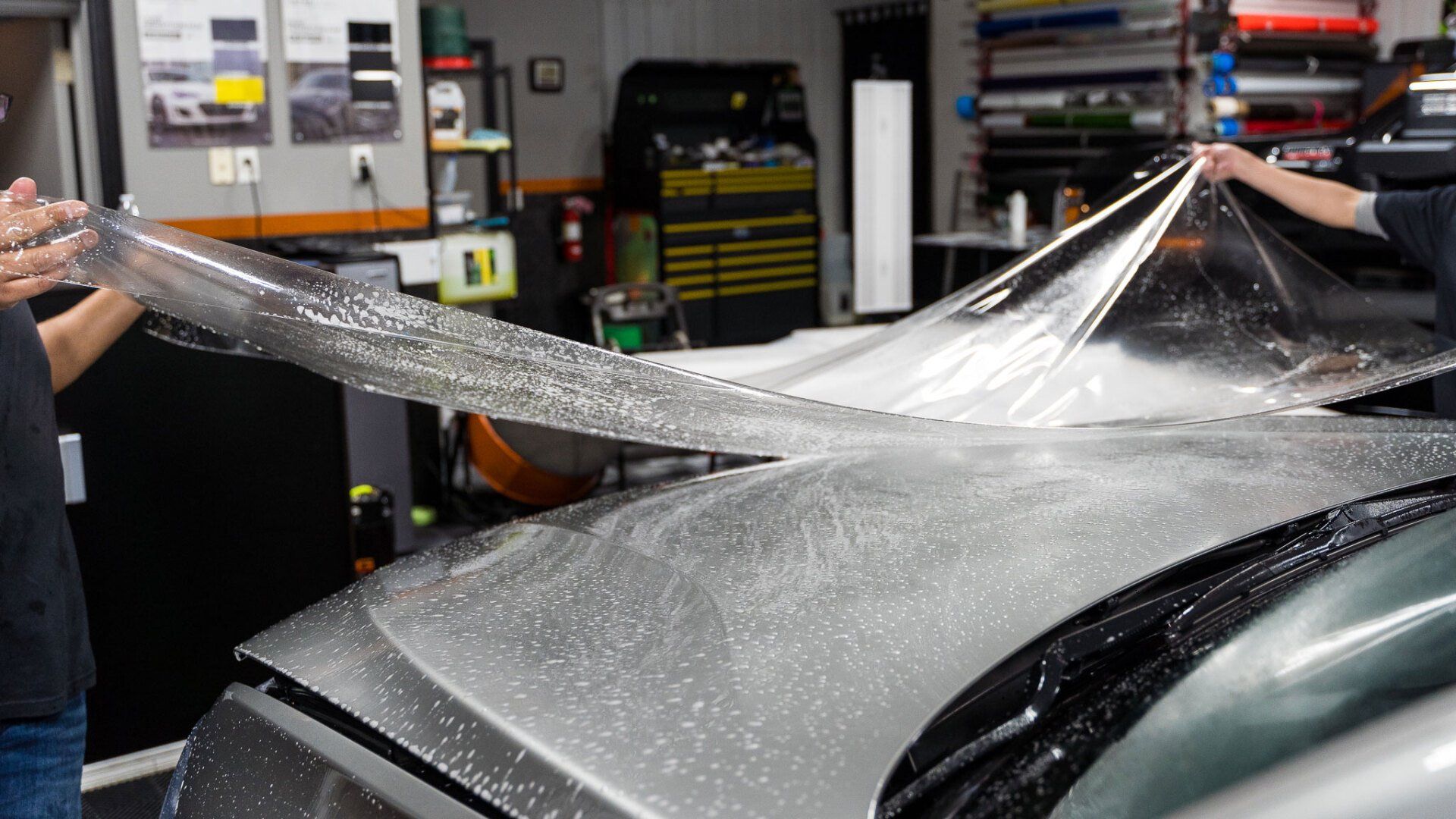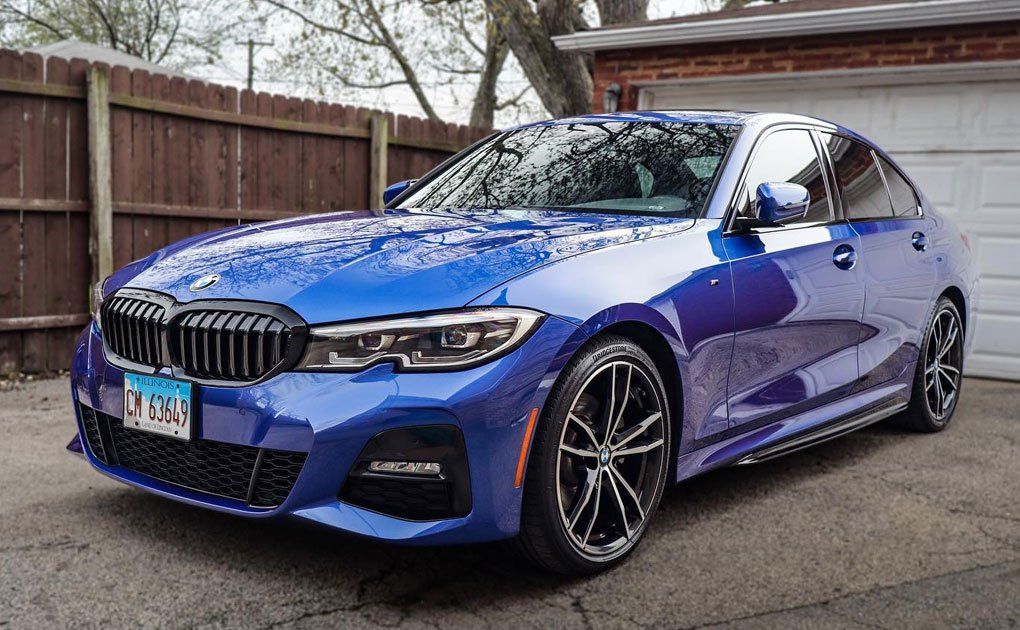How to Tell When Your Paint Protection Film Needs Replacing: 5 Key Signs
CALL (708) 574-8496
GET A FREE ESTIMATEWhen you invest in paint protection film, you hope it will keep your vehicle looking fresh and shiny for years to come. But just like most things, wear and tear can take a toll on even the best materials. If you’ve noticed that your car’s once-pristine surface is starting to look tired, you might be wondering if it's time for a replacement.
Key signs that your paint protection film needs replacement include yellowing of the film due to UV exposure, visible cracks from impacts or harsh weather, loss of adhesion indicated by peeling edges, and a significant reduction in gloss level. Regular inspections should be conducted to ensure the PPF is maintaining its protective qualities and to address any issues before they compromise your vehicle's paint integrity.
Signs Your Paint Protection Film Needs Replacing
Understanding the common indicators that your paint protection film has outlived its useful life can save you time, money, and hassle in the long run. When you first apply paint protection film, you expect it to uphold your vehicle's flawless finish, but wear and tear over time are inevitable. By paying close attention to a few key signs, you can act before minor issues escalate into extensive damage.
Common Indicators
- Scratches: One of the most evident signs of PPF aging is scratches. These minor imperfections may seem trivial at first glance, yet they can compromise the integrity of the protective film itself. Think of it this way: imagine a small scratch on a delicate piece of fabric; it won't take long for it to fray and unravel. Similarly, a scratch on your paint protection film can allow dirt and moisture to breach the protective barrier, threatening the paint underneath. To ensure your car's surface remains intact, inspect your film regularly for any scratching.
- Cracking: Another major indicator of PPF deterioration is cracking. Cracks often emerge due to impacts from debris or extreme weather conditions. Picture a recently parked vehicle pelted by golf-ball-sized hail; each impact generates tiny fractures across the surface of the film. While these might not catch your eye immediately, over time, they can accumulate into larger cracks that expose the paint to harmful elements. If you notice cracks—big or small—it's crucial to address this issue promptly to prevent further damage to your car's finish.
- Discoloration: Next in line is the noticeable discoloration of your paint protection film. A clear indication that your protective film is aging prematurely is its tendency to develop a yellowish hue or haziness—a common byproduct of prolonged UV exposure. In sunny climates or during sweltering summer months, your vehicle’s exterior battles relentless sunlight, which can swiftly degrade performance. Generally speaking, if you've been parking outdoors consistently for several years and see yellowing, it's likely time for an upgrade.
- Dullness: Over time, you might notice that your once shimmering paint protection film has dulled significantly. This loss of gloss doesn’t just affect visual appeal; it also signifies a decline in protective qualities. When the film fails to maintain its shine, it likely isn’t repelling contaminants as effectively as before. To gauge whether your PPF needs attention, consider investing in a gloss meter—a handy tool that measures surface gloss levels and provides more definitive insight into when replacement might be necessary.
Recognizing these signs early allows you to maintain the integrity of your paint protection film while preventing repainting costs later down the road. Regular inspections not only improve aesthetics but also ensure longevity—keeping both your car looking pristine and enhancing its resale value over time.
Visible Scratches and Bubbles
Understanding Scratches
When it comes to your vehicle's paint protection film, scratches are more than just surface blemishes; they signify potential problems that could reduce the film's protective capabilities. You might not realize it, but even minor scratches can create entry points for contaminants. To identify these scratches effectively, perform a thorough inspection under ideal lighting conditions. Park your car in a well-lit area, preferably in natural sunlight. This makes it easier to catch the light's reflections on the film’s surface. If you are in a garage or a dimly lit space, using a flashlight will help illuminate any imperfections. An effective method is to gently run your fingers over the surface of the film. Minor scratches often feel smooth, while deeper ones will have a noticeable dip. If you suspect multiple scratches, grab a magnifying glass to examine closely.
Understanding Bubbles
Similarly, bubbles can present an issue that may initially appear harmless but contributes to the film’s deterioration. They typically arise from improper installation or environmental factors that disrupt the adhesive bond between PPF and your car's paint. Changes in temperature can cause expansion and contraction of the film, leading to bubble formation. Fortunately, addressing small bubbles is quite manageable. For tiny bubbles, use a sewing pin to carefully pop them and then smooth out the area using a squeegee or even your hands, applying gentle pressure to flatten them against the surface. However, for larger bubbles, seeking professional assistance is wise. Attempting to force air out of bigger bubbles may damage the paint protection film or underlying paint during the process.
Taking proactive measures against scratches and bubbles is integral to prolonging the life of your paint protection film. Regular inspections and quick remedies should be essential strategies as part of your vehicle care routine. Next time you wash your car or park in direct sunlight, take those extra moments for this important check—your investment deserves it!
Fading and Discoloration
Discoloration is a clear indication that your paint protection film is past its prime. Many drivers have experienced that heartbreaking moment when their vehicle’s gleaming surface begins to lose its vibrant color. This fading usually manifests as yellowing or dulling, making the once glossy finish seem lackluster and tired. Such changes not only affect the aesthetics of your car but can also signal deeper issues regarding the protective qualities of the film.
Prolonged exposure to sunlight stands at the forefront of causing such deterioration. The UV rays in sunlight work tirelessly, breaking down the paint protection film's material over time, leading to that unwanted yellow tint. Moreover, if your car often endures harsh weather conditions—like intense heat or relentless rain—the film may degrade even more quickly. The interaction of moisture with UV radiation is particularly destructive, compounding damage and resulting in cracks or increased fading. Regular maintenance can significantly extend the life of your PPF.
To ensure lasting protection, consider a few simple practices. Inspect regularly; make it a habit to check for discoloration once a month, particularly if your vehicle spends significant time parked outdoors. Look for any noticeable color changes compared to areas shielded by shadows—this disparity highlights fading. In addition to regular self-checks, don't hesitate to seek out professional assessments. Experts can utilize specialized tools like gloss meters to accurately measure the film’s sheen and provide insights into its condition.
Edge Peeling and Detachment
One of the most significant indicators that your paint protection film is nearing its end is the troublesome issue of edge peeling. You might find yourself glancing over your vehicle's exterior, only to notice those pesky corners starting to lift away from the surface. This can happen for various reasons—whether due to improper installation, environmental exposure, or even time itself wearing on the material. Understanding this issue is essential because it not only impacts the appearance of your vehicle but also compromises the protective qualities of the film. Recognizing signs early can save you from costly repairs down the line, making routine inspections vital.
When looking for indications that your paint protection film may be detached, pay close attention to any lifting at the edges. These areas can serve as gateways for dust and dirt to infiltrate beneath the film, ultimately leading to damage to the underlying paint. The loss of adhesion is often exacerbated by UV exposure; 30% of edge peeling cases are attributed to this factor alone. As you check your vehicle, give special attention to zones where wear might be more pronounced, such as near bumpers or wheel wells.
To thoroughly assess these peeling edges, gently press down on any areas showing signs of lifting—if they don’t stick back into place easily, this indicates that the adhesive has likely failed. This situation warrants immediate attention! Leaving it unattended can cause accumulated dirt, making future removal far more difficult. Addressing peeling issues quickly is essential for maintaining the integrity of your PPF. Ideally, if you notice even minor signs of detachment, take action within days rather than allowing it to escalate into a larger problem. Removing excess debris before further wear occurs can prolong both the life and effectiveness of your film.
Professional vs. DIY Replacement Options
When considering whether to hire a professional or take on a DIY project, it's essential to weigh the merits of each approach.
Professional PPF Replacement
Professionals are equipped with specialized tools and possess the experience needed to guarantee a flawless installation. Their understanding of paint protection film materials allows them to navigate the complex contours of various vehicle models seamlessly. This expertise improves aesthetics and ensures that the protective qualities of the film are maximized, safeguarding against environmental damage more effectively. However, there's a trade-off: hiring professionals typically costs between $500 and $1,500, or even more depending on factors such as vehicle size and film quality. For those who prioritize perfection and can afford the expense, opting for professional installation promises peace of mind. Knowing that experts handle every detail means one can expect a top-notch finish—and many professionals offer warranties of 5 to 10 years on both the film and their work.
DIY PPF Replacement
On the other hand, if you're budget-conscious or enjoy hands-on projects, DIY replacement kits may be appealing. These kits generally range from $50 to $300, significantly lowering upfront costs. DIYing your paint protection film can feel rewarding and gives you direct control over the application process. However, it demands meticulous attention to detail; mistakes like air bubbles or misalignment could not only mar the appearance but impair the film’s function as well. Reflecting on your skill level becomes crucial. Are you comfortable handling delicate materials? Do you have the necessary patience? If you’re unfamiliar with paint protection film application, the risk of imperfections might outweigh the benefits of saving money with a DIY approach. But if you feel confident in your abilities or relish a challenge, taking on this task yourself can be quite satisfying.
Maintenance Tips for Longevity
Proper maintenance routines can extend your PPF’s life considerably, making it crucial to adopt good habits from day one. Imagine investing in a beautiful new car, only to expose it to elements that can cause irreversible damage. With just a little effort and smart strategies, you can protect your investment and keep it looking pristine.
- Avoid Harsh Chemicals: For starters, avoiding harsh chemicals is paramount. Instead of using abrasive cleaners, opt for pH-balanced products specifically designed for vehicles. They are gentle on the paint protection film while effectively removing dirt without causing deterioration.
- Regular Washing: Ideally, you should wash your car every two weeks or so. If you live in an area with a lot of sand or road debris, you may want to increase the frequency. A simple wash with gentle soap will remove grime that can gradually erode the film's protective qualities. Use a microfiber cloth to dry off the surface afterward.
- Seasonal Care: Seasonal care is equally important when it comes to maintaining your PPF. During those hot summer months, try to avoid prolonged sun exposure by parking in shaded areas whenever possible or utilizing a car cover. This not only protects the external surfaces but also significantly reduces UV wear that can lead to yellowing and cracking.
- Professional Inspections: Scheduling professional inspections annually keeps you ahead of potential issues. Professionals have the expertise needed to check for signs of damage early on, such as discoloration or edge detachment that could compromise the film's effectiveness. A small investment in these inspections often saves you from costly repairs down the line.
By incorporating these simple practices into your routine, not only do you enhance the longevity of your paint protection film, but you also preserve your vehicle’s value and appearance for years to come. Prioritized care and regular inspections contribute significantly to maintaining both the aesthetics and functionality of your paint protection film.
Premium Paint Protection Film Service in Carol Stream, IL
Protect your vehicle with the
premium paint protection film service at D’Andrea Auto Detailing in Carol Stream, IL. Our expertly applied film acts as a shield against scratches, road debris, and environmental damage, ensuring your car maintains its pristine appearance. Experience the peace of mind that comes from knowing your investment is safeguarded by top-quality materials and skilled technicians dedicated to excellence. Discover how our paint protection film can enhance your vehicle's longevity and aesthetic appeal today! Call us at (708) 574-8496 to get started!





